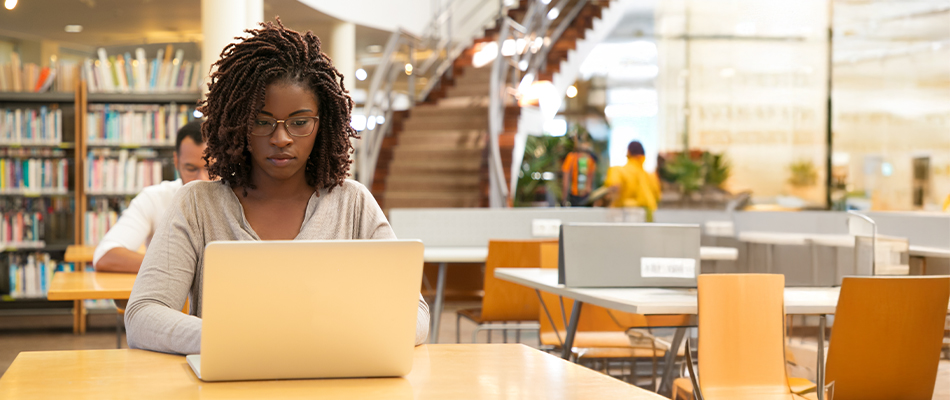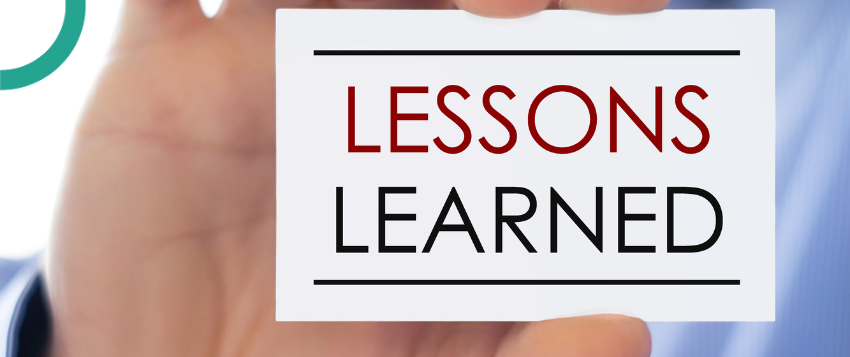Studying is essential when enroled in an educational institute such as a school or university. But more important than studying is retaining the information for long periods. When students apply techniques to help them learn, understand, and retain information, it becomes embedded in their memory.
If you are wondering why it is important to understand how to remember what you study, this information can be needed when preparing for exams such as the matric or the National Benchmark Test (NBT). It also helps students to better prepare for internal assessments and university exams.
This article will cover how to study and remember effectively, various techniques students can use, and how to identify your learning style.
Table of Contents
How to Remember What You Study?
The purpose of studying is to learn the subject material taught in class and know how to utilise it in practical settings. Instead of trying to learn how to study and remember fast, students should lean towards how to study effectively and remember. This will allow them to understand the subjects they are studying better.
Once students learn how to study and remember, it will become an essential habit that will continue to reap its benefits even in the workplace. It will allow them to quickly understand client guidelines or break the various business processes to identify areas that require reorganisation.
Students often employ learning methods that work for them while preparing for their exams. These could be highlighting key concepts, making notes, or problem-solving. However, to make an impact, learning techniques should be an ongoing process and should not be limited to exam time.

Understanding Your Learning Style
Before students research how to remember what you have studied, it is important to identify the type of learner they are. Some prefer to highlight important passages and create notes based on them. For those questioning how to study notes and remember them, they can use charts and flashcards to test their knowledge.
Once students can identify their learner type, it becomes easier for them to select a learning style that will work for them in the long run. This can lead to students managing their study time effectively and improving their performance in assessments and exams.
- Visual Learners: These learners best grasp information when they can see it through drawings, diagrams, or charts. These people think better with visual support and might have difficulty comprehending large chunks of information orally.
- Auditory Learners: Individuals who retain information by speaking and listening are auditory learners. They prefer to listen to lectures and learn better by speaking out loud or in discussion groups.
- Kinesthetic Learners: These students prefer to retain information through practical learning activities. They also prefer to integrate movements into their study methods and will prefer peer teaching.
- Reading/Writing Learners: To answer how to study and remember what you read, the best method for these learners is to write and create notes. They incorporate additional reference materials to create concise notes that help them retain information.
What are the Ways to Remember What You Study?
Many studies have been conducted to identify memorisation strategies but these are only helpful for a short duration. The knowledge that students gain from effective learning techniques allows them to retain information for longer periods. This is handy when students are enrolled in advanced degree programmes or working in a research position.
No one technique applies to all. Sometimes, students can also use multiple techniques to clarify a topic or a subject they are preparing for. Students can use these popular learning techniques when searching for how to study and remember.
- Active Learning: This technique involves students becoming active participants in the learning process. Case studies, group discussions, and explaining ideas in their own words enhance students’ learning. Instead of being passive listeners, students are encouraged to think and formulate solutions.
- Chunking Information: Instead of learning and memorising large blocks of information, it helps to break it into smaller points. Students can create notes to expand on during discussions or create a mind map to understand the correlation.
- Practice Retrieval: Students can self-evaluate by answering key points noted on flashcards, solving short quizzes, and answering how and why questions based on the study material.
- Use Mnemonics: Students create acronyms or drawings to help understand a concept. Drawings are especially helpful when studying for a subject like Physical Sciences.

Creating an Effective Study Environment
While it is important to understand how to study and remember, the environment also plays a crucial role. If a student is using active learning techniques but they are in a crowded bus that will hinder memorisation. Students need to identify their ideal study environment.
Some prefer to study with music, while others prefer zero distractions. Some thrive in group discussion settings, while others study alone. The study space that students choose should allow them to focus and boost overall productivity. This will lead to a higher marks.
- Create a Study Schedule: Students must create a daily study schedule to help them establish structure. This schedule also allows them to set goals and allot time for practice and revision, which helps them focus and use their time efficiently.
- Choose the Right Space: Choosing a space with minimal distractions is important. Students should not be constantly interrupted, so they should avoid common areas such as the living room.
- Organise Your Materials: Students should keep their study area neatly organised and have all the necessary materials nearby so they do not have to lose their chain of thought while searching for them. A decluttered study space allows students to focus and not feel anxious.
Read more on How to Make a Study Timetable for Matric
Incorporating Regular Reviews
As students review how to study and remember their course material, they will learn that more than one session is needed to retain information. They need to revisit the material to condense the information into smaller chunks that can be expanded during the exams.
While different types of learners use different techniques to retain information, they need to self-evaluate to ensure they understand the study material. They can also join a study group for discussions or teach a peer.
- Spaced Repetition: Study material is reviewed at closer intervals in the beginning and is spaced out in the later stages of the studying process. This is usually performed with flashcards and incorporates olf and new study material.
- Summary and Reflection: After studying, students should create a short summary of their understanding. This could be a note form, diagram or mind map. Writing helps to reinforce the study material.
- Quiz and Test: Students can also solve old exam papers that can help them evaluate the effectiveness of the studying techniques.

Staying Healthy for Optimal Learning
A healthy mind and body are vital for optimum functioning. Even when preparing for a significant exam, students must take breaks and create time for themselves. Since studying involves sitting for long periods, students should follow a healthy diet and create time for physical activity in their timetable.
- Balanced Diet: Students must avoid junk food, which can make them lethargic and cause them to gain weight. Instead, they should opt for nutritious, filling, healthy meals.
- Adequate Sleep: Students must get at least 7 hours of uninterrupted sleep to aid in the learning process. Sleep deprivation can make it harder to concentrate and process information.
- Physical Activity: Even a simple physical activity such as walking helps to release endorphins, which can improve mood and reduce stress.
Dealing with Study Anxiety
It is normal to feel anxious while studying, but learning how to study and remember efficiently can help bring about positive change. Students must create a timetable, set goals, and create a clutter-free study environment to help ease the study process.
When students can visualise their goals and accomplishments, they feel confident and prepared. Repeat revisions and regular problem-solving help indicate how well they can cover the curriculum and can also help ease anxiety.
- Practice Mindfulness: Students can try meditating or taking deep breaths to help them calm down and focus.
- Positive Self-Talk: They should also self-motivate themselves and list their accomplishments instead of focusing on weaker areas.
- Set Realistic Goals: It helps to set daily targets or small, achievable goals. These help students focus and give them a sense of accomplishment.
Conclusion
The most important part of studying is retaining information. If students cannot remember what they have studied, they have used their time inefficiently. This article helped determine how to study and remember information for extended periods. It is best first to identify the type of learner they are and then pick a technique that best suits their needs.
Students can incorporate these effective study techniques into their daily studying to make them more useful instead of trying to figure out how to study fast and remember well for exams.
Gain valuable insights into various educational topics by visiting Regenesys’ Reginsights page.

How to Study and Remember? FAQs
How to study and remember everything?
To enhance retention, students should use techniques such as active learning, chunking information, practice retrieval, and mnemonics.
What are the different learning styles?
Instead of trying to find points on how to study fast and remember everything, students should identify their learning styles: visual, auditory, kinesthetic, or reading/writing. This can also them to use targeted learning strategies.
How can I create an effective study environment?
To enhance focus and productivity, students should choose a quiet space with minimal distractions, organise their materials, and ensure good lighting and comfortable furniture.
What should I do if a study technique isn’t working?
Experiment with different techniques that align with your learning style, and combine methods if you wish.
How can I self-evaluate my understanding of the material?
Students can solve quizzes, old exam papers, and peer discussions to assess their comprehension and identify areas needing further review.
How to study quickly and remember?
Students should pace their studies throughout the year instead of trying to understand the subject matter in a limited amount of time. This will also help to reduce anxiety.
How to study for a test and remember?
Students can create flashcards, draw mindmaps, and try to answer why—and how-based questions. Preparing for tests regularly allows students to continuously study and improve their understanding of the subject.
How to study faster and remember more?
To study efficiently, students can create a timetable with achievable goals. They should also use study techniques instead of simply reading from the textbook. This combination will allow them to focus, study faster, and remember information for longer.






